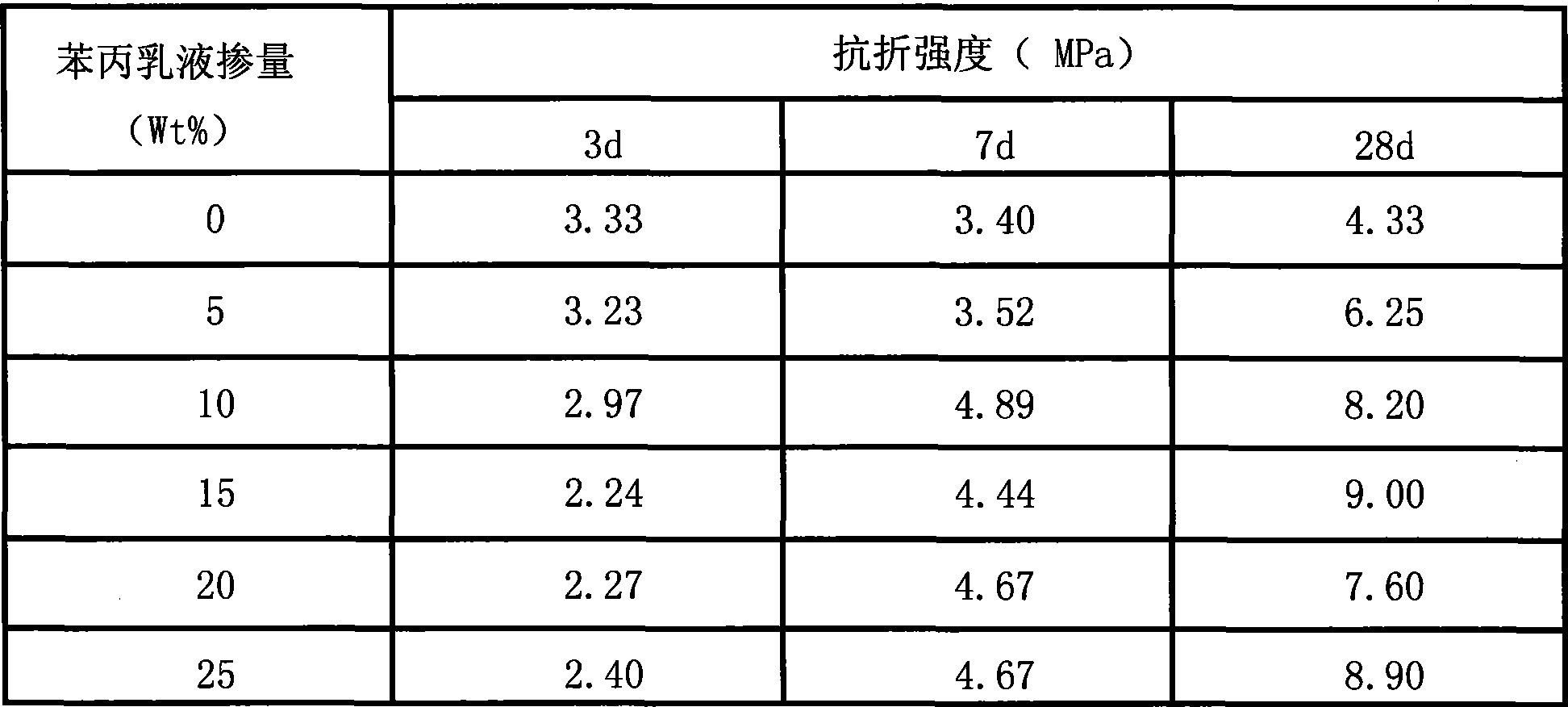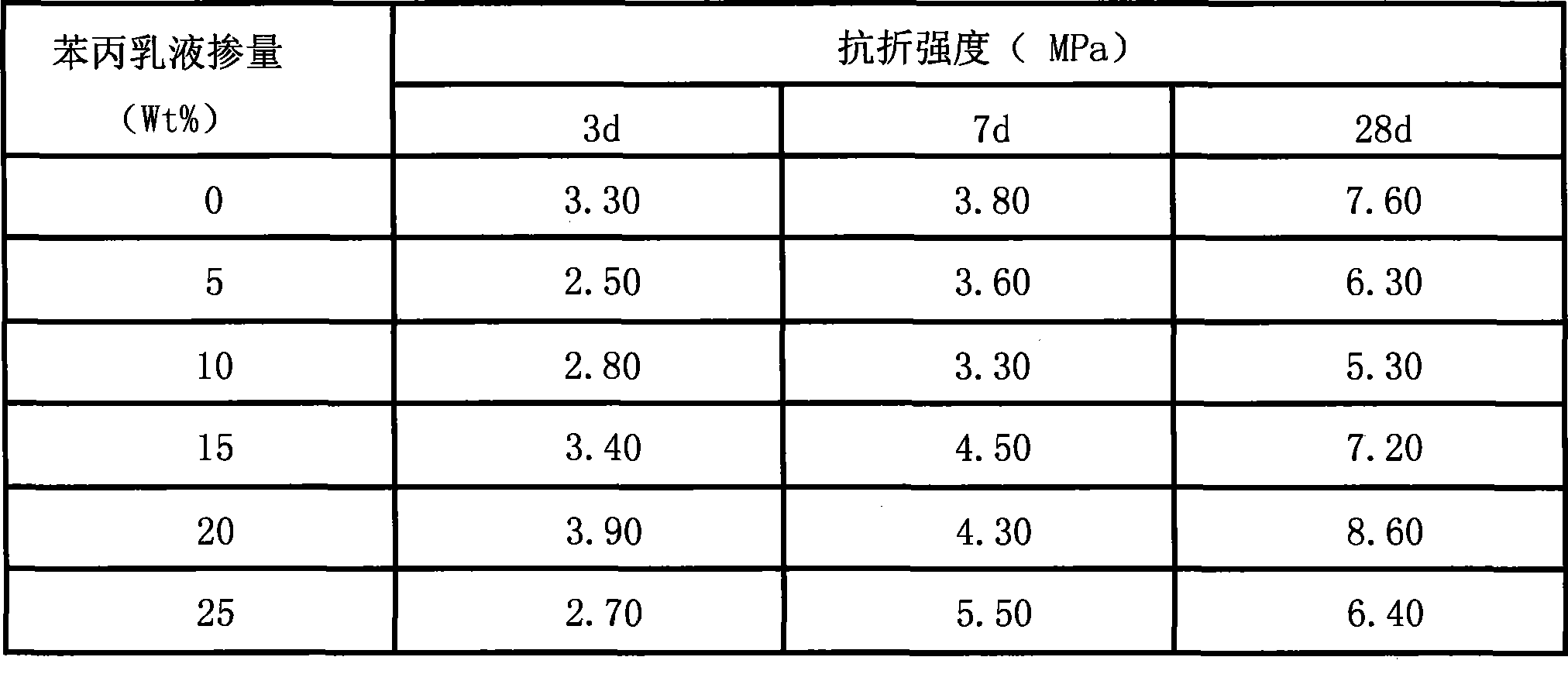Method for preparing inorganic aluminosilicate polymer and inorganic macromolecule composite gelled material
A silicate polymer and composite cementitious material technology, applied in cement production and other directions, can solve problems such as high brittleness, poor toughness, environmental pollution, etc., and achieve the effects of saving resources, improving the environment, and improving the microstructure
- Summary
- Abstract
- Description
- Claims
- Application Information
AI Technical Summary
Problems solved by technology
Method used
Image
Examples
Embodiment 1
[0030] Example 1: Preparation of phosphorus slag inorganic aluminosilicate polymer and organic polymer composite gelling material
[0031] Accurately weigh 1500g of phosphorus slag, and take this as the basis of measurement (100%); adopt external blending method, sodium silicate dosage is 13% of phosphorus residue; styrene / methyl acrylate copolymer emulsion dosage is respectively 13% of phosphorus residue 0% (control), 5%, 10%, 15%, 20% and 25%; the water residue ratio is 0.32.
[0032] Sodium silicate is dissolved in water, and a styrene / methyl acrylate copolymer emulsion is mixed into the solution at room temperature to form a stable polymer alkaline solution.
[0033] Pour the phosphorus slag into the double-rotation and double-speed slurry mixer for stirring, then add the polymer alkaline solution, stir at a high speed to form a uniform slurry, and put the slurry into a 40mm×40mm×160mm iron triple mold . Vibrate on the rubber sand vibrating table and scrape it flat with ...
Embodiment 2
[0037] Example 2: Preparation of slag inorganic aluminosilicate polymer and organic polymer composite gelling material
[0038] Accurately weigh 1300g of slag, based on this (100%); adopt the external blending method, the amount of sodium silicate added is 13% of the slag; the amount of styrene / methyl acrylate copolymer emulsion added is respectively 0% of the slag (Contrast), 5%, 10%, 15%, 20% and 25%; The water residue ratio is 0.32.
[0039] Sodium silicate is dissolved in water, and styrene / methyl acrylate copolymer emulsion is mixed into the solution at room temperature to form a stable high molecular alkaline solution.
[0040] Pour the slag into a double-rotation and double-speed slurry mixer for stirring, then add the polymer alkaline solution, stir at a high speed to form a uniformly mixed slurry, and put the slurry into a 40mm×40mm×160mm iron triple mold. Vibrate on the rubber sand vibrating table and scrape it flat with a scraper to obtain the formed slag inorganic...
PUM
 Login to View More
Login to View More Abstract
Description
Claims
Application Information
 Login to View More
Login to View More - R&D
- Intellectual Property
- Life Sciences
- Materials
- Tech Scout
- Unparalleled Data Quality
- Higher Quality Content
- 60% Fewer Hallucinations
Browse by: Latest US Patents, China's latest patents, Technical Efficacy Thesaurus, Application Domain, Technology Topic, Popular Technical Reports.
© 2025 PatSnap. All rights reserved.Legal|Privacy policy|Modern Slavery Act Transparency Statement|Sitemap|About US| Contact US: help@patsnap.com


